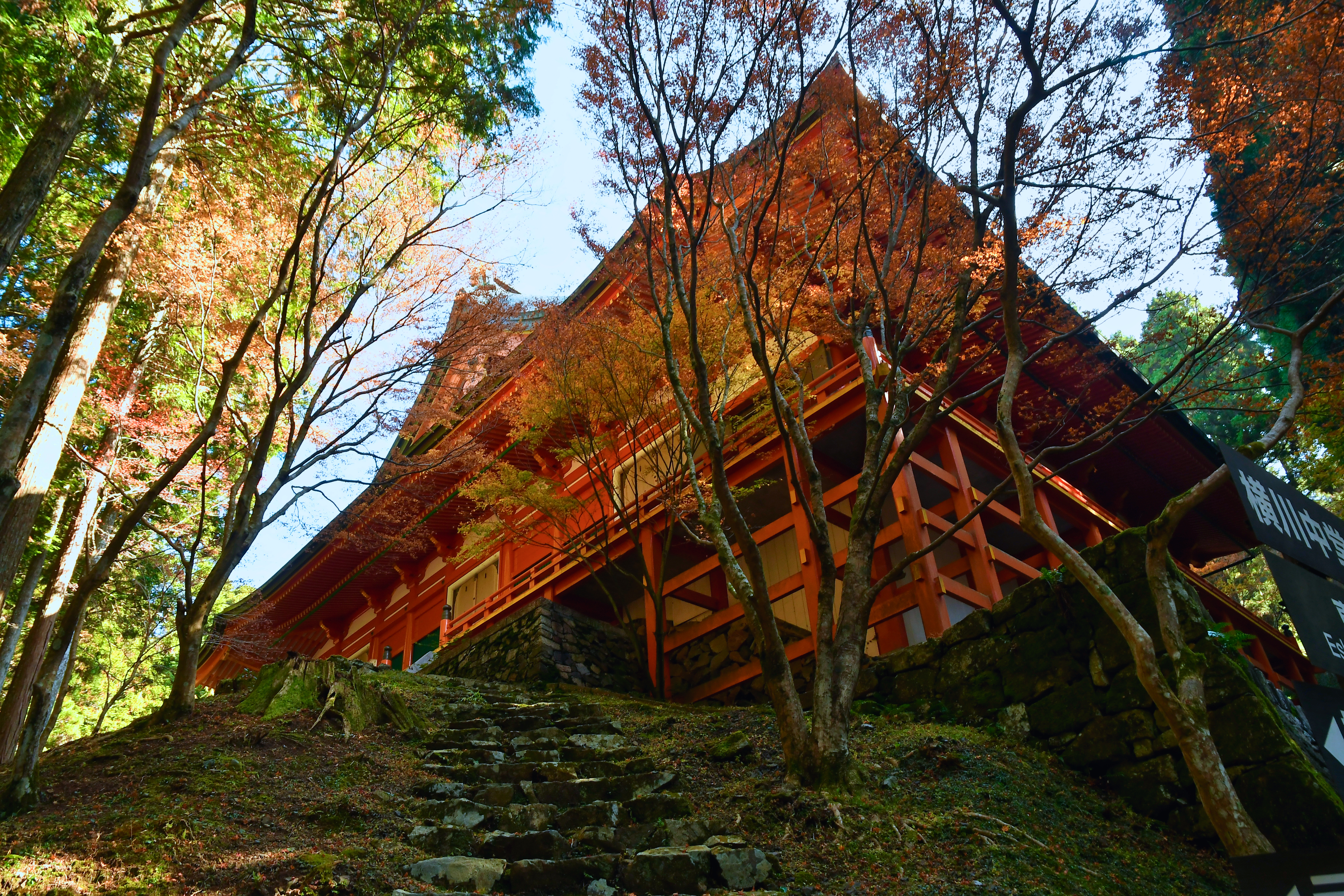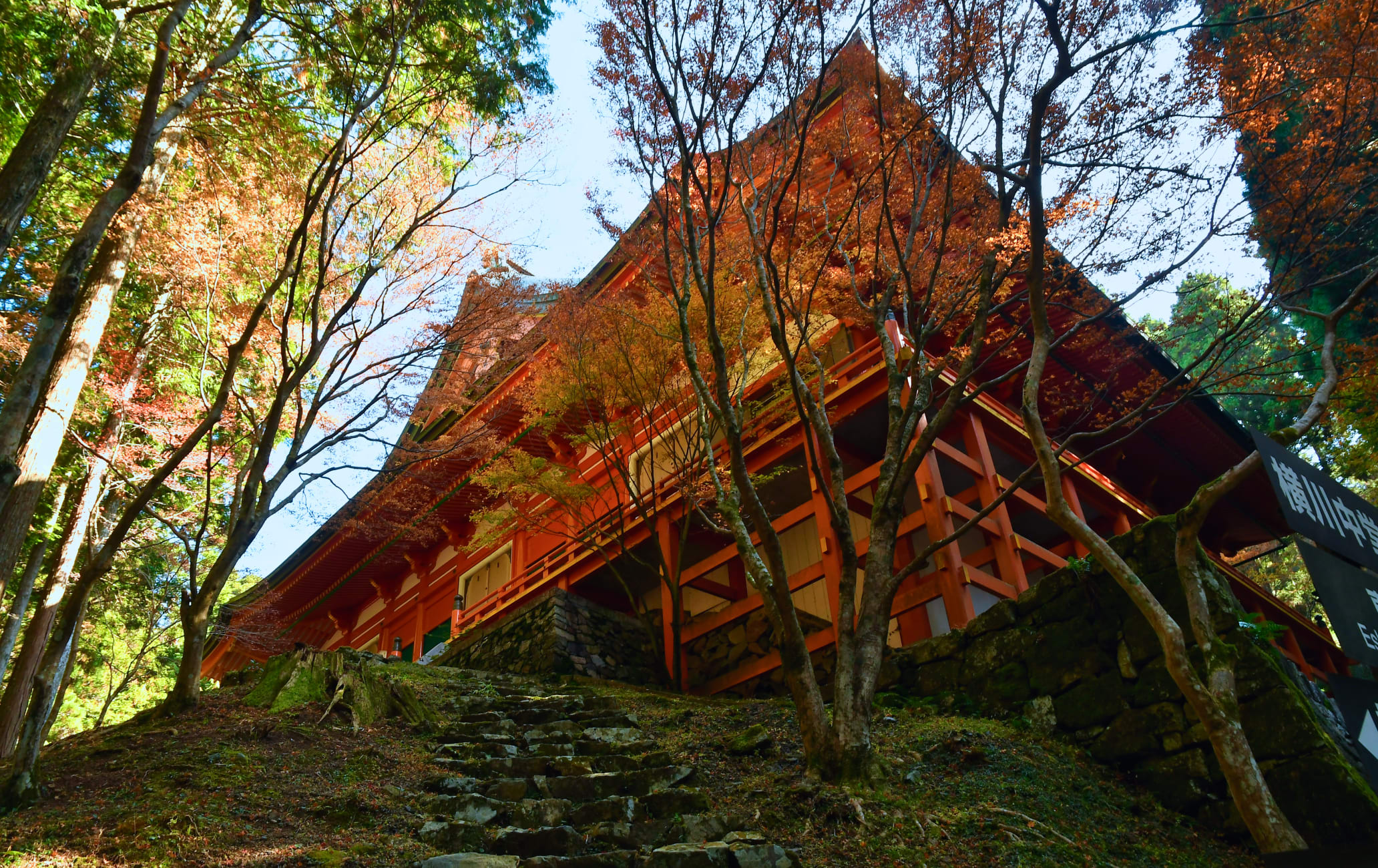A temple designated as a UNESCO World Heritage Site with 1200 years of history and tradition
Mt. Hiei Enryakuji Temple can be found on Mt. Hiei, the general name of the sacred mountain that stands on the border running between Shiga and Kyoto. The temple was established at the hillside of the main peak Obiei that sits at an altitude of 848 meters above sea level and serves as the head temple of the Tendai-shu(Tendai sect) of Japanese Buddhism. It was eventually designated as a UNESCO World Heritage Site in 1994.
Don't Miss
- View the Fumetsu-no-Hoto (immortal light of Buddhism) in the Konpon Chu-do, said to have kept burning for 1200 years by replenishing the oil daily
- Listen to the beautiful sounds of the Suikinkutsu that sits before the Amida-do
- Indulge in the views from the mountain overlooking Lake Biwa and the city of Kyoto
How to Get There
If travelling from Tokyo, Osaka or Nagoya, then take the Shinkansen to JR Kyoto Station. From there, take the Hieizan Drive Bus to the Enryakuji Bus Center. The ride is 70 minutes and the service does not operate from early December to late March.
Visitors can also take a train from JR Kyoto Station to the foot of Mt. Hiei and ride the cable car or ropeway up to Enryakuji Temple.
The Hieizan Shuttle Bus connects the To-do, Sai-to, and the Yokawa areas. This service does not operate from early December to late March.
Quick Facts
The temple was constructed in the year 788
Mt. Hiei Enryakuji Temple is actually the collective name for more than 100 buildings within its grounds
The temple houses 10 national treasures and over 50 Important Cultural Properties of Japan
Mt. Hiei Enryakuji Temple in the magnificent mountains
Mt. Hiei Enryakuji Temple was constructed in 788 by Saicho, a man born on the shore of Lake Biwa who developed his talents as a monk at an early age. Saicho later went on to establish the Buddhist sect known as Tendai-shu, transforming the entire mountain into a large-scale training ground for monks. It eventually became known as the Root of Japanese Buddhism, as great numbers of monks were trained here, and ascetic practices are still conducted here to this day. With some 1200 years of history and tradition, Enryakuji Temple was designated a UNESCO World Heritage Site in 1994.




A temple split between three areas
Enryakuji Temple in its entirety is comprised of more than 100 structures scattered throughout Mt. Hiei's 1,700 hectares. The mountain is divided into three areas; To-do, Sai-to, and the Yokawa, each with their own main temple hall.
To-do centered around the Konpon Chu-do
Enryakuji Temple's central area revolves around the Konpon Chu-do in the To-do area and serves as the temple's birthplace. It has subsequently expanded since its establishment, as despite numerous fires starting with the burning of Mt. Hiei by Oda Nobunaga in 1571, each restoration of the temple has been grander in scale than the last.
A statue of Yakushi Nyorai, commonly referred to as the Medicine Buddha, said to have been created by Saicho is enshrined within the main temple hall. It sits behind another sacred object, the Fumetsu-no-Hoto—the immortal light of Buddhism.
A 5-minute walk from the Konpon Chu-do is the Amida-do, a beautiful building erected in 1937 where visitors can enjoy the serene sounds of the Suikinkutsu where drops of water fall into an underground jar.


The Religious Summit Meeting on Mt.Hiei is an annual event that has been held at Enryakuji Temple since 1987 to pray for world peace across religious and sectarian boundaries. To commemorate the first summit, a monument was erected on the grounds of the To-do area commissioned by the then Tendai-zasu (the head priest of the Tendai sect) and the Pope, and is inscribed with the names of all of the participating religions, from Christianity to Islam, Judaism, Hinduism and Confucianism.






Sai-to, 1kilometers away from To-do
The Sai-to area was built by Encho, the next Tendai-zasu following Saicho. Its Ninai-do hall is comprised of a corridor that connects the Jogyo-do and Hokke-do halls, where strict ascetic practices are still being conducted. Meanwhile, the Shaka-do is the main temple hall of the Sai-to area, and can be found by passing under the Ninai-do corridor and following a long flight of stone steps.




Yokawa, 5 kilometers from Sai-to
Yokawa was opened by the third Tendai-zasu Ennin of Enryakuji Temple. Its main temple hall, the Yokawa Chu-do, is a stage-like structure inspired by the ships Japanese envoys rode to China during the Tang Dynasty. It is surrounded by fiery red maple trees in fall, making for some breathtaking views and beautiful scenery.






Superb views
Thanks to its location high in the mountains between Shiga and Kyoto, taking the Hieizan Driveway's winding roads or SAKAMOTO CABLE will treat visitors with spectacular views of the autumn leaves and Lake Biwa which stretches out below. Guests can also take in the scenery while enjoying a warm cup of tea at the lounge on the first floor of the Enryakuji Kaikan, located in the To-do area of the complex. There is even opportunity to stay overnight at the Kaikan, with the rooms and public bath offering the spectacular views of the surrounding scenery.

Just a short walk from Enryakuji Temple
For visitors looking to stretch their legs, Miidera Temple and Ishiyamadera Temple are two more grand temples that can be found in Shiga not too far from Enryakuji Temple. Alternatively, Biwako Valley resort complex is also a popular travel destination where visitors can take in the great views of Lake Biwa , soak in Ogoto Onsen hot spring or peruse the collections at the MIHO MUSEUM .
























































